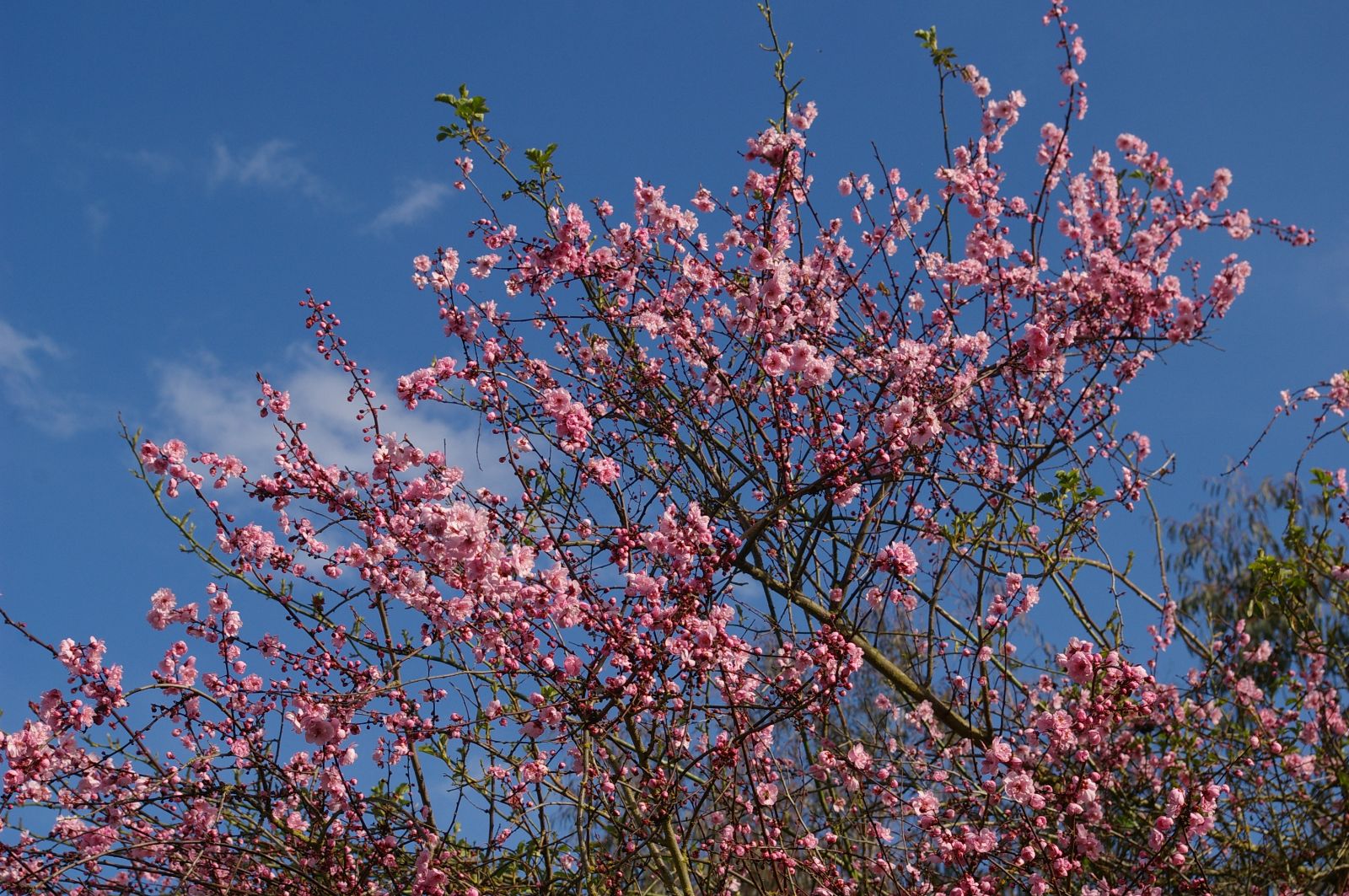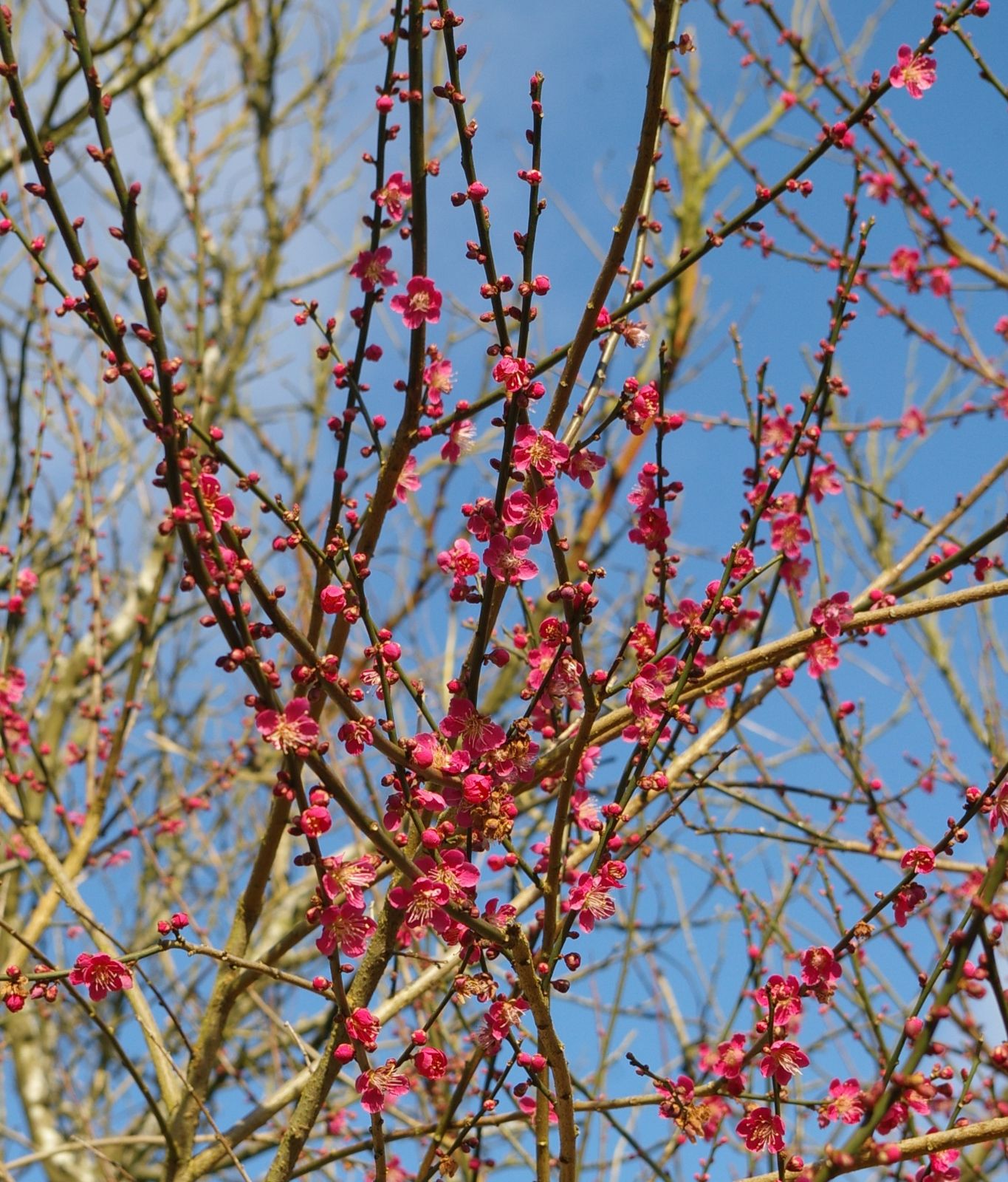Prunus mume
Credits
Article from Bean's Trees and Shrubs Hardy in the British Isles
Recommended citation
'Prunus mume' from the website Trees and Shrubs Online (treesandshrubsonline.
Infraspecifics
Other taxa in genus
- Prunus alleghaniensis
- Prunus americana
- Prunus × amygdalo-persica
- Prunus amygdalus
- Prunus angustifolia
- Prunus apetala
- Prunus arabica
- Prunus argentea
- Prunus armeniaca
- Prunus avium
- Prunus besseyi
- Prunus brigantina
- Prunus campanulata
- Prunus canescens
- Prunus cantabrigiensis
- Prunus cerasifera
- Prunus cerasus
- Prunus cocomilia
- Prunus concinna
- Prunus conradinae
- Prunus consociiflora
- Prunus cornuta
- Prunus cuthbertii
- Prunus dasycarpa
- Prunus davidiana
- Prunus × dawyckensis
- Prunus dielsiana
- Prunus domestica
- Prunus dulcis
- Prunus emarginata
- Prunus × fontanesiana
- Prunus fruticosa
- Prunus glandulosa
- Prunus grayana
- Prunus himalaica
- Prunus hortulana
- Prunus humilis
- Prunus ilicifolia
- Prunus incana
- Prunus incisa
- Prunus jacquemontii
- Prunus kansuensis
- Prunus lannesiana
- Prunus laurocerasus
- Prunus litigiosa
- Prunus lusitanica
- Prunus maackii
- Prunus mahaleb
- Prunus maritima
- Prunus maximowiczii
- Prunus microcarpa
- Prunus mira
- Prunus mugus
- Prunus nigra
- Prunus nipponica
- Prunus orthosepala
- Prunus padus
- Prunus pensylvanica
- Prunus persica
- Prunus pilosiuscula
- Prunus prostrata
- Prunus pumila
- Prunus rufa
- Prunus salicina
- Prunus sargentii
- Prunus serotina
- Prunus serrula
- Prunus serrulata
- Prunus sibirica
- Prunus × sieboldii
- Prunus simonii
- Prunus sogdiana
- Prunus speciosa
- Prunus spinosa
- Prunus ssiori
- Prunus subcordata
- Prunus subhirtella
- Prunus takesimensis
- Prunus tangutica
- Prunus tenella
- Prunus tomentosa
- Prunus triloba
- Prunus virginiana
- Prunus × yedoensis
A deciduous tree of rounded habit 20 to 30 ft high, with glabrous, lustrous, green twigs. Leaves 21⁄2 to 4 in. long, roundish or broadly ovate, contracted at the end into a long tapering point, sharply and often doubly toothed, with scattered hairs on both sides, becoming glabrous except about the midrib beneath; leafstalk 1⁄2 to 3⁄4 in. long. Flowers pale rose, 1 to 11⁄4 in. across, fragrant, produced singly or in pairs (each on a very short stalk) from the joints of the previous year’s wood; petals broadly obovate; calyx 1⁄2 in. across, with oblong rounded lobes. Fruits described as yellowish, globose, 1 to 11⁄4 in. wide, scarcely edible; shell of nut perforated.
In China, P. mume has been cultivated as an ornamental for some 1,500 years, and is believed to be native in the northern parts of the country, also of Quelpaert Island, Korea. According to Handel-Mazzetti, it also grows wild in S.W. China. It was introduced to Japan at an early date and became one of the most popular of garden trees; according to Miyoshi, some three hundred varieties of it have been named there. It is also grown for its fruits, which are preserved by drying or salting and eaten as a vegetable.
P. mume was introduced to Britain in 1841, but it did not become established in cultivation here until the end of the last century, when various double forms began to be imported from Japan. Messrs Baltet of Troyes imported a pink-flowered double from Japan in 1878, which was first distributed as “P. myrobalana fl. pleno” or was placed under P. cerasifera, and this confusion seems to have lasted well into the present century. P. mume is, of course, an apricot, and not a plum.
The Japanese apricot is valuable in gardens, especially the double-flowered forms, for its early, profuse flowering, being generally in bloom about the same time as the almond, and at its best almost as beautiful. The flowers are delicately ^ perfumed. For all that, it is not at all common, and few nurserymen list it. It should be given a sheltered place.
From the Supplement (Vol. V)
cv. [‘Beni-shidon’]. – This is the name under which this cultivar was distributed. Correct is: ‘Beni-shidare’.
cv. [‘O-moi-no-wac’]. – This is evidently a mis-spelling of ‘Omoi-no-mama’ but it is a little doubtful if the plant mentioned is the true clone of that name, which according to a colour illustration in a Japanese catalogue is sportive, with semi-double, pale pink or red flowers. The plant distributed in this country has white flowers, occasionally sporting to pale pink.
There has recently been a revival of interest in the Japanese apricot, and several cultivars received from The Flower Association of Japan have been planted at Kew.
'Alba Plena'
Flowers white, double.'Alphandii'
Flowers semi-double, pink. The plants now under this name may not be all of one clone.'Beni-chidori'
Awards
AGM
Flowers ruby-crimson, single, about {3/8} in. wide, very fragrant. Award of Merit February 14, 1961, when shown by the Sunningdale Nurseries. There is a fine specimen there on the office wall.


